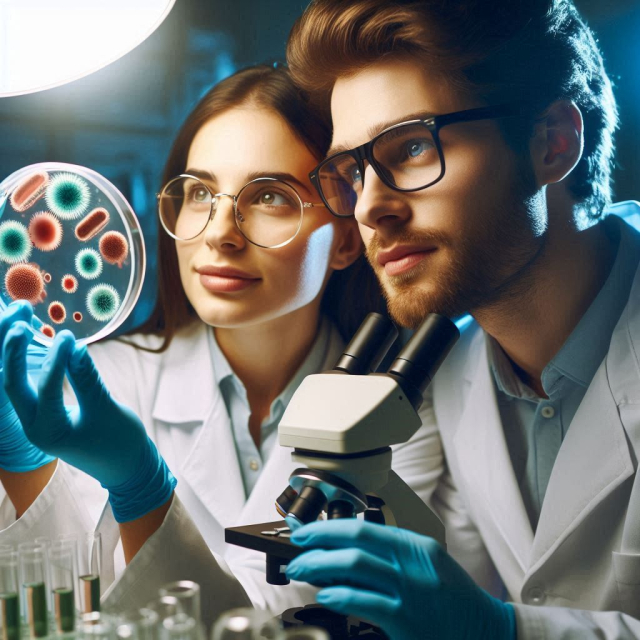Human biology is a large and fascinating field that examines the differences and similarities between men and women. These differences not only cover physical appearance, but also genetic and hormonal composition, and some physiological functions. In this article, the distinctive biological characteristics of men and women will be explored, addressing topics such as genetics, anatomy, and hormonal systems.
Genetics and Chromosomes.
The most fundamental difference between men and women on a biological level lies in the sex chromosomes. Humans have 23 pairs of chromosomes, of which one of these pairs determines the sex of the individual. Women typically have two X chromosomes (XX), while men have one X chromosome and one Y chromosome (XY).
The Y chromosome is what defines many of the male characteristics. This chromosome contains the SRY (Sex-determining Region Y) gene, which triggers the development of the male gonads, or testes, in the embryo. Without the presence of the Y chromosome and the SRY gene, the embryo will develop ovaries, resulting in a female anatomy.
Reproductive Anatomy.
Reproductive anatomy is one of the most obvious differences between men and women.
Women:
- Ovaries: Women have two ovaries that produce eggs and the female sex hormones estrogen and progesterone.
- Uterus: A muscular organ where the fetus develops during pregnancy.
- Vagina: Canal that connects the uterus with the outside of the body and that serves as a passage during childbirth.
- Fallopian tubes: Tubes that connect the ovaries to the uterus and where fertilization of the egg occurs.
Men:
- Testicles: Organs responsible for the production of sperm and the male sex hormone, testosterone.
- Penis: Organ used for both urination and reproduction.
- Prostate and seminal vesicles: Glands that produce fluids that nourish and transport sperm.
- Vas deferens: Tubes that carry sperm from the testicles to the urethra.
Hormonal System.
Hormones play a crucial role in the biological differences between men and women.
Female hormones:
- Estrogen: Main female sex hormone, responsible for the development of secondary sexual characteristics such as breast growth and regulation of the menstrual cycle.
- Progesterone: Important for maintaining pregnancy and regulating the menstrual cycle.
Male Hormones:
- Testosterone: Main male sex hormone, responsible for the development of secondary sexual characteristics such as increased muscle mass, growth of facial and body hair, and change in voice during puberty.
Secondary Sexual Characteristics.
Secondary sexual characteristics are those that develop during puberty and further distinguish men from women.
Women:
- Breast development: One of the most notable changes during puberty.
- Hip width: Women tend to have wider hips than men, which makes childbirth easier.
- Fat distribution: Body fat in women is distributed differently, accumulating mainly in the hips, thighs and buttocks.
Men:
- Muscle development: Men generally develop more muscle mass due to higher levels of testosterone.
- Facial and body hair: Men tend to have more hair on their face and body.
- Voice change: The male voice becomes deeper due to the growth of the larynx and the thickening of the vocal cords.
Physiological Differences.
In addition to anatomical and hormonal differences, there are several physiological differences between men and women.
Women:
- Menstrual cycle: A regular cycle of approximately 28 days, which includes menstruation, the follicular phase, ovulation, and the luteal phase.
- Pregnancy and breastfeeding: Women have the ability to carry and give birth to a child, as well as breastfeed.
- Higher body fat percentage: On average, women have a higher body fat percentage than men, which is important for reproduction and maintaining energy during pregnancy and lactation.
Men:
- Greater bone and muscle density: Men generally have denser bones and greater muscle mass.
- Greater aerobic capacity: Men tend to have greater lung and cardiovascular capacity, which can influence athletic performance.
- Constant sperm production: Unlike the female menstrual cycle, men produce sperm continuously throughout their reproductive life.
Psychological and Behavioral Factors.
Although the biological differences are clear, there are also psychological and behavioral aspects that are intertwined with biology.
Women:
- Empathy and emotional connection: Studies suggest that women tend to score higher on tests of empathy and emotional communication skills.
- Multitasking: Some research indicates that women may have a greater ability to multitask simultaneously.
Men:
- Aggression and competition: Men tend to display higher levels of aggressive and competitive behavior, possibly due to the influence of testosterone.
- Spatial orientation: Men often score higher on tests of spatial abilities, such as the ability to visualize objects in three dimensions and orient yourself in space.
Importance of Biological Differences.
Understanding the biological differences between men and women is crucial not only from a medical point of view, but also to promote equality and equity in society. These differences must be recognized and respected, but must not be used to justify discrimination or inequality.
In the medical field, knowledge of biological differences is vital for the proper diagnosis and treatment of various diseases. For example, certain heart conditions may present differently in men and women, and responses to medications may also vary by sex.
The biological differences between men and women are the result of millions of years of evolution and have led to the diversity we see in the human species today. These differences range from the most basic levels of genetics and anatomy to the most complex aspects of behavior and psychology.
By understanding and respecting these differences, we can move towards a more equitable and just society, where both similarities and diversities are valued and celebrated. Biology teaches us that although men and women may be different in many ways, both are equally important and essential for the continuity and development of humanity.
